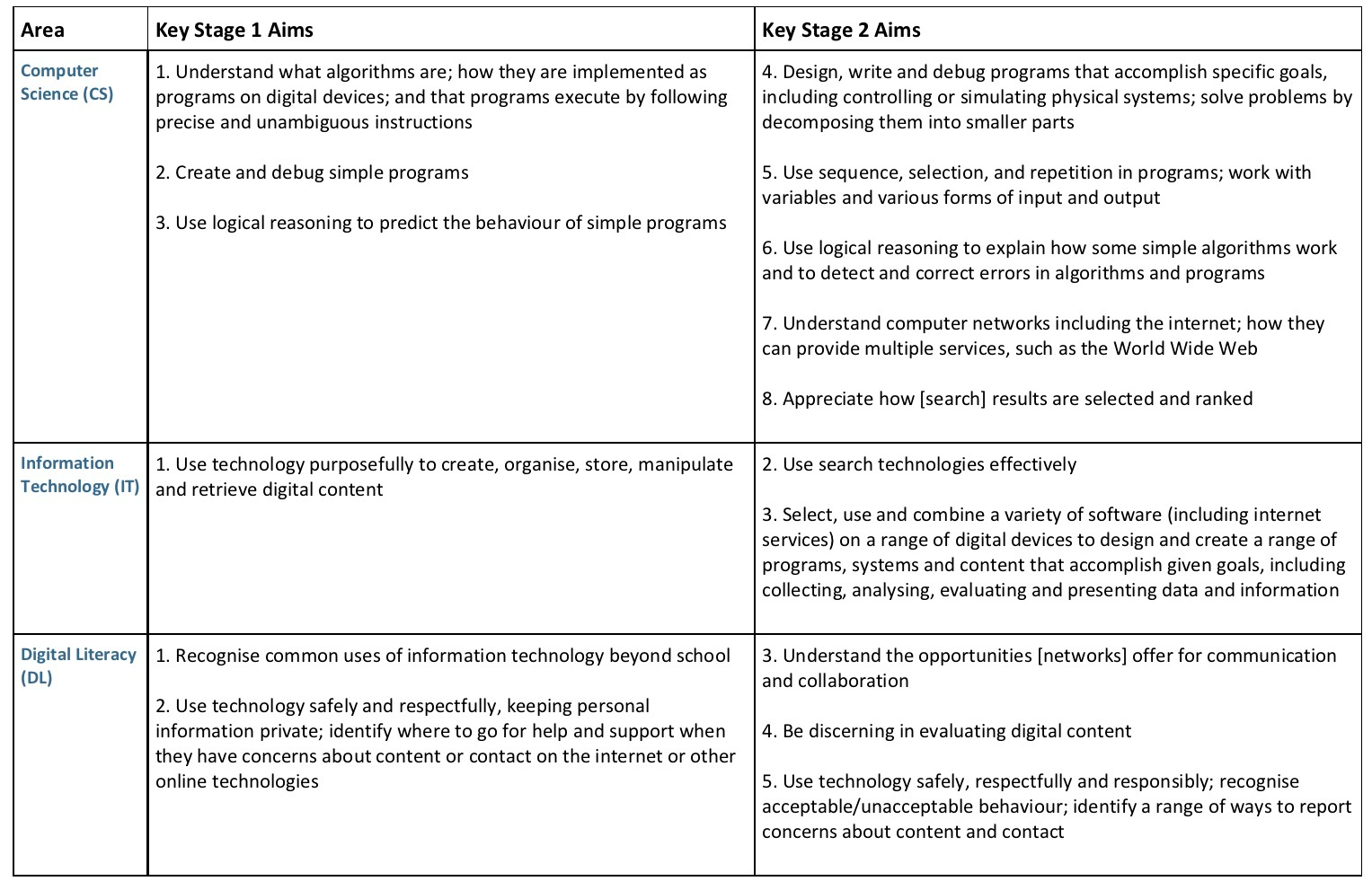Computing Scheme of Work & Planning– Key Stage 1 and Key Stage 2
Computing has been divided into three areas:
Computer Science
Information Technology
Digital Literacy (which includes eSafety).
The aims for the computing curriculum has been categorized into these three areas, detailed below.

Digital Literacy has been broken into two areas, Digital Creativity and Digital Citizenship & Technology. This is to ensure that we cover each of the areas of what is a vast subject area and offer a balanced curriculum to children.
This is demonstrated in the diagram below, this time instead of linking to the program of study we have given examples of skills children will develop in covering these topics.

We have six dedicated Computing units per academic year (plus an additional one for Digital Citizenship & Technology (DL) with a strong focus on e-safety).
It is important to recognise however that some aspects of traditional ICT are still required to be taught discretely and should not be forgotten:
- In KS1, children should be taught to: “use technology purposefully to create, organise, store, manipulate and retrieve digital content”;
- In KS2, children should be taught to: “select, use and combine a variety of software (including internet services) on a range of digital devices to design and create a range of programs, systems and content that accomplish given goals, including collecting, analysing, evaluating and presenting data and information”.
The whole school plan is shown below
We follow the EYFS framework and National Curriculum which set out what children should know by the end of each key stage.
Early Years Foundation Stage Framework